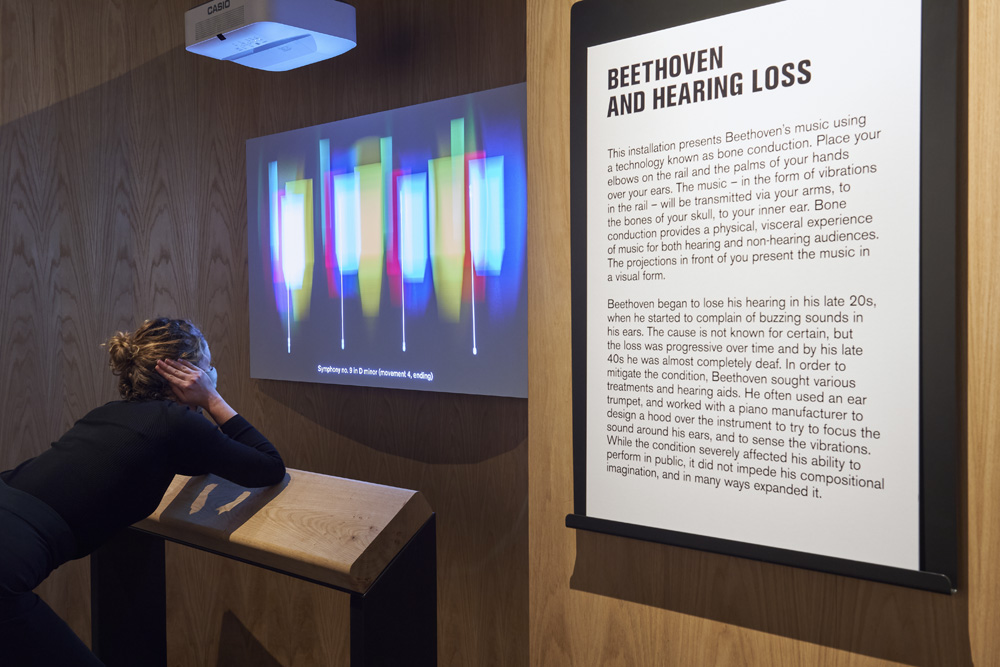It’s often forgotten that the British Library is a repository of manuscripts not just books and this enlightening exhibition (postponed from 2020 which was the 250th anniversary of his birth) shows what a surprisingly wide range of Beethoven texts are held there.
The famous 9th symphony, for example, was commissioned by the Philharmonic Society of London in 1824 for £50. He reneged on the contract by allowing the first performance in Vienna in 1824. It was performed in London in 1825 before being published in Germany in 1826. It’s oddly moving to see the manuscript. Of course, the 9th had, and has, a colourful and sometimes political afterlife. That too is alluded to here.
I loved the notebook which he carried when walking so that he could jot down ideas. It dates from 1825 and contains sketches for String Quartet in B flat major Op 130. The exhibition also includes laundry lists (lots of tablecloths) and grocery lists in his own hand. Suddenly – as we look at his scribbled account of a cadenza he improvised for a piano concerto, it’s as if he were in the room.
Beethoven was famously deaf. One of the most fascinating things in this exhibition is an immersive reconstruction of what Beethoven would have “heard” towards the end of his life, using bone conduction technology. Before you is a screen showing the sound waves as a piece of orchestral music is played. By covering your ears with the palms of your hands and resting your elbows on a narrow wooden ledge (bit like a high altar rail) you also can feel the music as Beethoven did. This, of course, also enables hearing-impaired visitors to this delightful exhibition to share it too.
Review by Susan Elkin
Image: Bone conduction technology in British Library’s Beethoven exhibition. Photography by Justine Trickett



